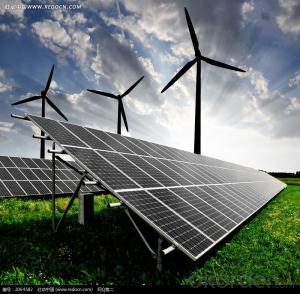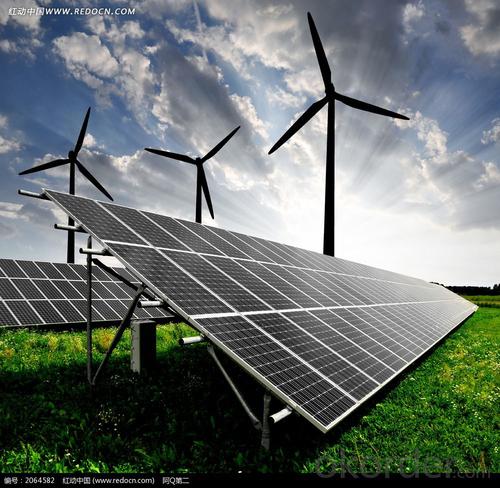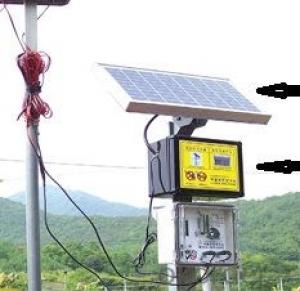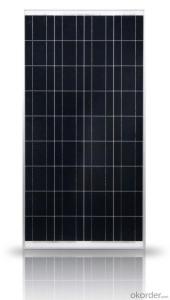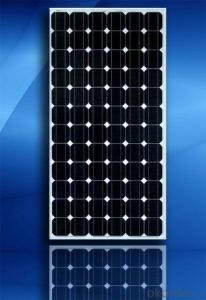Hot Carrier Solar Cells Poly Solar Panel with 25 Years Warranty for Hot Selling CNBM
- Loading Port:
- Qingdao
- Payment Terms:
- TT OR LC
- Min Order Qty:
- 10 set
- Supply Capability:
- 300000 set/month
OKorder Service Pledge
OKorder Financial Service
You Might Also Like
Polycrystalline Solar Modules
CNBM offers a range of small, medium and large polycrystalline solar modules, designed for a range of requirements.
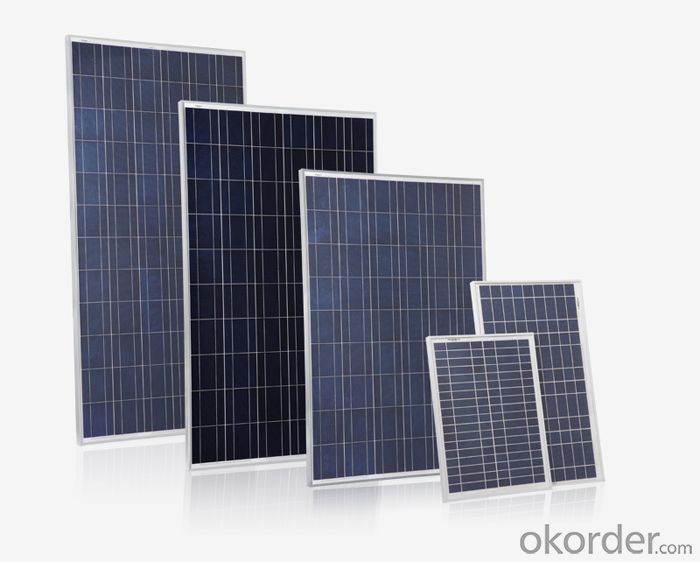
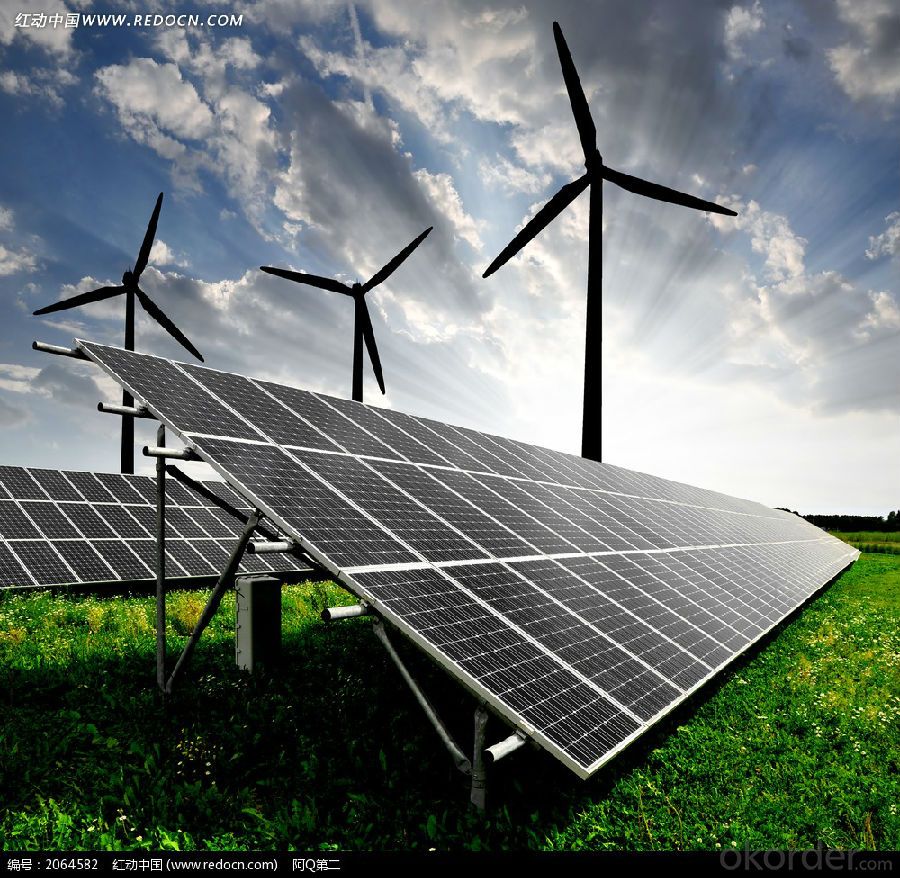
Specifications:
Tolerance | +/-3% |
Cell | Polycrystalline silicon solar cells (156 x 156mm) |
N0. of Cells | 60 (10 x 6) |
Dimension of Modules (mm) | 1650 x 990 x 40 |
Weight (kg) | 25.5 |
Limits:
Operating Temperature | -40~+85? |
Storage Temperature | -40~+85? |
Maximum System Voltage | 1000 VDC max. |
Hail Impact | Diameter of 28mm with impact speed |
Temperature and Coefficients:
NOCT | 48C+/-2? |
Voltage temperature coefficient (%/K) | -0.35 |
Current temperature coefficient (%/K) | 0.05 |
Power temperature coefficient (%/K) | -0.45 |
Characteristics:
Model: | SGM-200P | SGM-210P | SGM-220P |
Max-power voltage Vmp (V) | 29.2 | 29.4 | 29.41 |
Max-power current Imp (A) | 6.85 | 7.14 | 7.48 |
Open-circuit voltage Voc (V) | 36.5 | 36.69 | 36.9 |
Short-Circuit Current Isc (A) | 7.28 | 7.6 | 7.93 |
Max-power Pm(W) | 200 | 210 | 220 |
Model: | SGM-230P |
Max-power voltage Vmp (V) | 29.8 |
Max-power current Imp (A) | 7.72 |
Open-circuit voltage Voc (V) | 37.31 |
Short-Circuit Current Isc (A) | 8.19 |
Max-power Pm(W) | 230 |
STC: Irradiance 1000W/m2, module temperature 25?, AM-=1.5
Poly Crystalline Solar Panels Specifications Range
Maximum Power (Pm) | Dimension | Weight | Operating Voltage (Vmp) | Operating Current (Imp) | Open Circuit Voltage (Voc) | Short Circuit Current (Isc) |
0.45W | 140x80x10mm | 0.08kg | 3.3V | 150mA | 4.6V | 160mA |
1.0W | 162x140x10mm | 0.16kg | 7.5V | 150mA | 10.3V | 160mA |
4.5W | 269x251x23mm | 0.8kg | 16.5V | 0.27A | 20.5V | 0.3A |
10W | 420.1×268.9×22.6mm | 1.92kg | 17.5V | 0.58A | 20.5V | 0.6A |
20W | 425x502x50mm | 3.0kg | 16.8V | 1.19A | 21.0V | 1.29A |
30W | 593x502x22.6mm | 3.9kg | 16.8V | 1.78A | 21.0V | 1.94A |
40W | 655x537x50mm | 5.75kg | 17.3V | 2.31A | 22.1V | 2.54A |
50W | 839x537x50mm | 6.0kg | 17.5V | 2.9A | 21.8V | 3.17A |
65W | 1111x502x50mm | 7.2kg | 17.6V | 3.69A | 22.1V | 3.99A |
80W | 1204x537x50mm | 7.7kg | 17.6V | 4.55A | 22.1V | 4.8A |
- Q: Can solar cells be used for powering medical devices?
- Yes, solar cells can be used for powering medical devices. Solar cells can generate electricity from sunlight, which can then be used to power various types of medical devices such as portable medical monitors, insulin pumps, and even small surgical tools. This offers a sustainable and reliable source of energy, particularly in remote or resource-limited areas where access to electricity may be limited.
- Q: Can solar cells be used in mountainous regions?
- Yes, solar cells can be used in mountainous regions. While mountainous regions may have varying weather conditions and shading from surrounding peaks, solar panels can still generate electricity from sunlight. However, the efficiency of solar cells may vary depending on factors like orientation, tilt angle, and the amount of direct sunlight received. It is crucial to carefully design and install solar systems in mountainous areas to optimize their performance and take advantage of the available sunlight.
- Q: Can solar cells be used in space satellites?
- Yes, solar cells can be used in space satellites. In fact, solar cells are commonly used in satellites to generate electricity from the sunlight in space. These cells convert sunlight into electrical energy, which is then used to power various systems and instruments onboard the satellite.
- Q: Can solar cells be used for disaster relief efforts?
- Yes, solar cells can be used for disaster relief efforts. They provide a reliable and sustainable source of electricity, enabling the operation of essential equipment such as medical devices, communication systems, and water purification systems in areas affected by natural disasters. Solar cells can also be easily transported and quickly deployed in emergency situations, making them an ideal solution for providing power in remote or inaccessible locations.
- Q: Can solar cells be used for battery charging?
- Yes, solar cells can be used for battery charging. Solar cells convert sunlight into electricity, which can then be used to charge batteries. This is a sustainable and efficient way to power various devices and systems.
- Q: Can solar cells be used for powering security systems?
- Yes, solar cells can be used for powering security systems. Solar cells are capable of converting sunlight into electricity, providing a sustainable and renewable energy source for various applications, including security systems. By harnessing solar power, security systems can operate independently from the grid, making them more reliable and cost-effective in remote or off-grid locations. Additionally, solar-powered security systems are environmentally friendly, reducing carbon emissions and minimizing reliance on fossil fuels.
- Q: How do solar cells perform in areas with high levels of air pollution and dust?
- Solar cells do not perform as efficiently in areas with high levels of air pollution and dust. The particles in the air can block sunlight from reaching the solar cells, reducing their ability to generate electricity. Additionally, the dust and pollution can accumulate on the surface of the solar panels, further decreasing their performance. Regular cleaning and maintenance are necessary to ensure optimal efficiency in such areas.
- Q: How do solar cells handle electromagnetic radiation?
- Solar cells are designed to efficiently convert electromagnetic radiation, particularly sunlight, into electricity. When electromagnetic radiation, such as sunlight, hits the solar cell, it excites the electrons within the cell's semiconductor material. This excitation creates an electric current, which can be harnessed as electrical energy. Therefore, solar cells are specifically designed to handle and utilize electromagnetic radiation to generate electricity.
- Q: Can solar cells be used to power streetlights?
- Yes, solar cells can be used to power streetlights. Solar-powered streetlights use solar panels to convert sunlight into electricity, which is then stored in batteries. This stored energy is used to power the streetlights during the night, making them an eco-friendly and cost-effective lighting solution.
- Q: How's the feedback of using 260 watt photovoltaic solar panel? Anybody ever used that?
- The conversion efficiency of the 260 watt photovoltaic solar panel is 18 %,which is already much better than the one I used before.
Send your message to us
Hot Carrier Solar Cells Poly Solar Panel with 25 Years Warranty for Hot Selling CNBM
- Loading Port:
- Qingdao
- Payment Terms:
- TT OR LC
- Min Order Qty:
- 10 set
- Supply Capability:
- 300000 set/month
OKorder Service Pledge
OKorder Financial Service
Similar products
Hot products
Hot Searches
Related keywords
